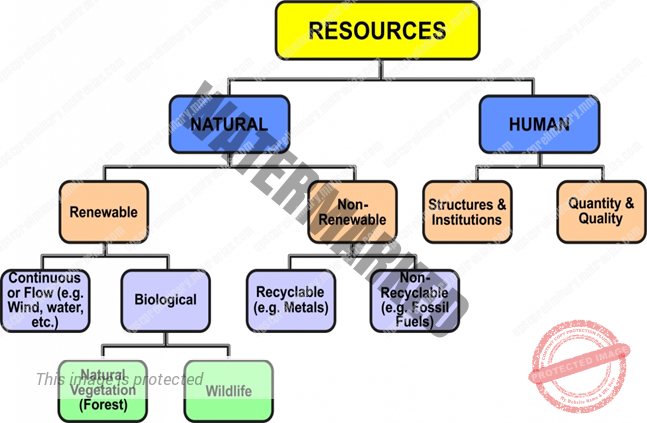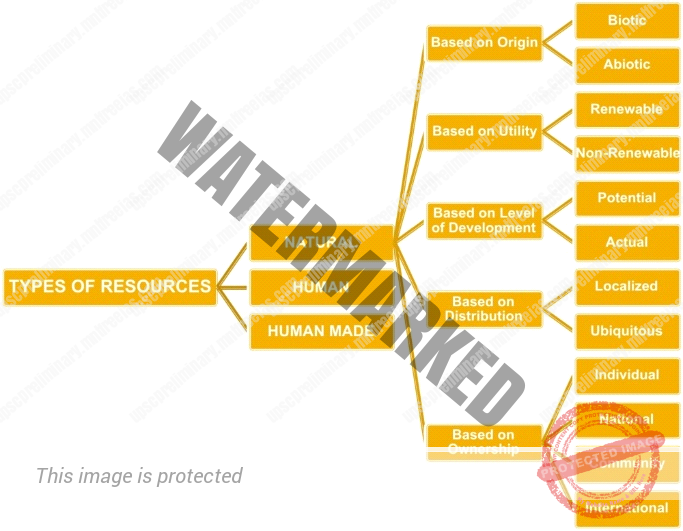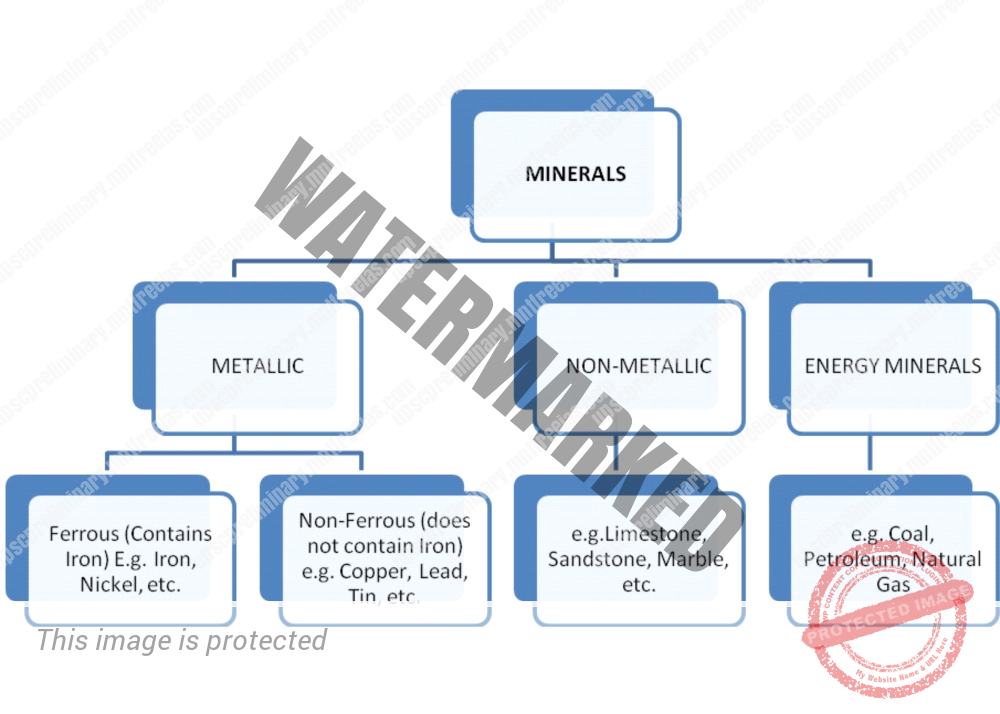- RESOURCES
- OCCURRENCE OF MINERALS
UNIT 6 – MINERALS AND RESOURCES – PART 2
Minerals and resources
Resources
Anything available in our environment that a society perceives to be useful for its economic and material wellbeing is called as resource. It could be both natural as well as cultural.
Natural materials become resources when humans value them. The uses and values of resources change from culture to culture and from time to time. Resources are spatially distributed varying in quantity and quality. Some resources are finite, while others can be replenished at varying rates. However, humans need to balance short-term rates of use against long-term availability to ensure a sustainable future.
Classification of resources
Resource Planning:
All resources are not available in a single place. There are regions which are rich in certain types of resources but are deficient in some other resources. So efficient resource planning is necessary to reduce the imbalance.
MINERAL RESOURCES:
A homogeneous, naturally occurring substance which has a definite chemical composition is called a mineral. These minerals are extracted from ores which are concentrations of minerals in rock that are high enough to be economically extracted for use.
All ores are minerals while all minerals are not ores as some of them might have a large amount of unwanted substances such as sand, stones and earthly impurities.
A country’s economic development is depending on the minerals. There are several types of minerals, but according to their characteristics and commercial use.
Based on their physical and chemical properties mineral are useful in various methods.
Occurrence of minerals:
Minerals are always found in impure form; these impurities are called Gangue.
Veins and lodes:
Magma under the surface of the earth holds important minerals. These magma fills up the cracks in rocks and get metamorphosed. Minerals generally occur in the cracks, crevices, faults, and joints of the igneous and metamorphic rocks. Minerals in smaller occurrence are called a ‘Vein’ and a larger occurrence is called a ‘lode’. E.g., Copper and Gold, etc.
Deposits:
Minerals that occur in beds and layers are formed as a result of deposition, accumulation and concentration. These are formed in sedimentary rocks and generally occur in horizontal layers. E.g., Coal, Potash, etc. limestone is formed from decomposition of marine animals and plants.
Minerals such as Gold, Silver and Platinum are found in alluvial deposits or placer deposits of the sands of valley floor and at the foothills.
Polymetallic nodules:
Also known as manganese nodules. These are metals accretion found on ocean basins. These are rich in Mg, Fe, Cu, Cobalt, etc.



